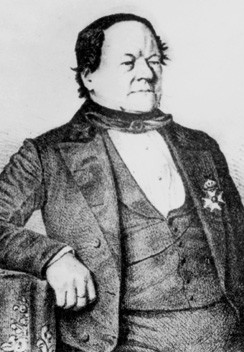-
(b.) -1785 September 23(d.)1873 May 22
Bio/Description
A 19th-century Swedish lawyer, translator, and inventor, he is best known for his pioneering work in computer technology. He studied law at Lund University, graduating in 1805. He then worked as a legal expert and translator (he translated several works of William Shakespeare) before turning predominantly to politics and mechanical engineering. He is most known for his inventions; the best known of these is the Scheutzian calculation engine, invented in 1837 and finalized in 1843. This machine, which he constructed with his son Edvard Scheutz, was based on Charles Babbage's difference engine. An improved model, roughly the size of a piano, was created in 1853 and subsequently demonstrated at the World's Fair in Paris, 1855. The machine was then sold to the British government in 1859. He created yet another machine in 1860, selling it to the United States. The devices were used for creating logarithmic tables. While the machine was not perfect and could not produce complete tables, Martin Wiberg reworked the construction from the ground up and in 1875 created a compact device which would print complete tables.
In 1796, when he was eleven years old, he entered J?nk?ping elementary school where he followed the normal course of instruction, which included theology, history and political geography. In addition he made the acquaintance of the classical authors. Afterwards he moved on to the Gymnasium in Wexi?, where the subjects on the curriculum were much the same as before. He showed a particular interest in languages and read the New Testament in Greek and even picked up somewhat outside the normal routine a fair amount of Hebrew. The main emphasis of his schooling was on languages and the humanities and this was to be of great use to him in his future career. He began his study at the University of Lund in the autumn of 1803, where he obtained his law degree in 1805, in preparation for more senior posts in mining, which had become his main goal. In 1800 his father had died, and in order to pay his way, he had been compelled to tutor junior students. In 1805, he became probationer at G?ta Hovr?tt in his home town. At various times, he also served as deputy actuary, provisional magistrate and on one occasion as mayor in Ulricehamn. In seeking to spread knowledge about science and technology, he published not only magazines and newspapers, but also quite a number of technical handbooks. This began in 1819 with Handbok f?r s? w?l enklare som mera konstig Blekning, and between then and 1832; he published some twelve handbooks in all, which were collected in a series entitled "Library for Art, Handicrafts and Applied Science". Later on he continued to publish technical handbooks, translated and edited by himself. He was also one of skillful Swedish translators from the first half of 19th century. His translation into Swedish of Shakespeare's Julius Caesar first appeared in 1816. It was the first translation into Swedish of this particular work, and only the second of any Shakespearean work. Later on he translated and published La Motte-Fouque, Werner, Kotzebue and Boccaccio, classical works of Aristophanes and Xenophon, native literature such as the historic plays of Per Henrik Ling and language readers for learning Latin or Italian. Scheutz was elected a member of the Royal Swedish Academy of Sciences in 1856.
-
Date of Birth:
1785 September 23 -
Date of Death:
1873 May 22 -
Gender:
Male -
Noted For:
Co-developer of the Scheutzian calculation engine that produced the first tables calculated and printed by machinery -
Category of Achievement:
-
More Info:


